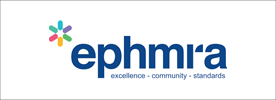
Introduction
Within qualitative research, overcoming language barriers is a key component when obtaining meaningful data and insights. Language barriers can obstruct the flow of information and compromise the quality of insights gathered during interviews and focus groups.
When conducting qualitative research in the healthcare landscape, translation plays a critical role in ensuring access to data and insights for diverse populations. Recognising this challenge, the team behind M3 Global Research’s QualStage has created a solution that transcends linguistic boundaries, whilst offering both concurrent and real-time translation options tailored to the diverse needs of researchers and participants alike.
Concurrent vs. Realtime Translation: Bridging the Gap in Qualitative Research
As researchers delve into diverse populations, the need for transcending language barriers becomes imperative. Two prevalent approaches, concurrent translation and real-time translation, have emerged as tools for navigating the linguistic diversity of qualitative research.
Real-time TranslationOne of the greatest challenges in qualitative research is the potential distortion of participant responses due to language barriers. Real-time translation addresses this challenge head-on, offering a dynamic solution that ensures respondents can express themselves in their native languages. QualStage's real-time translation feature has become instrumental in breaking down these linguistic barriers seamlessly.
In our real-time translation process, respondents freely express their thoughts and experiences in their native languages, all while the translation seamlessly takes place in the background. This ensures that the authenticity of participants' expressions is retained, and the cultural nuances embedded in their communication are accurately captured. This approach not only promotes diversity, equity, and inclusion (DEI) in the research process but also allows clients to listen to the translated interviews live, enriching their understanding. Moreover, in compliance with strict PII regulations, clients can be securely locked from hearing the voice of the respondent, particularly in countries like Germany where privacy regulations are stringent.
Concurrent TranslationConcurrent translation, also known as simultaneous translation, takes a slightly different approach. This method involves translating data, interviews, or observations as they are being collected in real-time. The key advantage lies in the immediacy of translation, reducing delays in data collection and analysis.
Utilising simultaneous translation necessitates a longer length of interview (LOI), as the translator is actively engaged in conveying the moderator's information to the respondent and translating the respondent's responses back to the moderator. This approach facilitates the use of a single moderator across diverse countries for the entire project.
This dynamic translation process empowers researchers to promptly comprehend and interpret gathered information, facilitating real-time adjustments to the research approach. This adaptability proves invaluable in fast-paced environments or scenarios where immediate insights are crucial. Concurrent translation not only enhances agility but also streamlines the overall research process, enabling researchers to efficiently collect and analyse data.
However, one must be mindful of potential challenges with concurrent translation, such as the need for highly skilled interpreters and the risk of information loss due to the rapid pace. Additionally, participants may need to adjust to the constant translation process, which could impact the natural flow of communication.
Choosing the Right Tool for the Research JourneyThe choice between real-time and concurrent translation ultimately depends on the specific goals and context of the qualitative research study. Real-time translation shines in scenarios where authenticity and cultural nuances are paramount, fostering a more inclusive and respectful research environment. Concurrent translation, on the other hand, excels in situations that demand immediate understanding and agile decision-making.
Simultaneous Interpretation with QualStage: A Game-Changer
QualStage offers a unique two-channel audio feature that integrates seamlessly into our virtual interview platform. This feature allows for simultaneous interpretation, breaking down language barriers and promoting a more inclusive research environment.
Key Features- Anonymity: Built-in encryption ensures the privacy of respondents' personal data.
- Seamless Sim-trans:Two-channel audio facilitates live, synchronised translations.
- One Price, Multiple Languages: Simple pricing with no daily minimums, supporting multiple languages.
- End-to-end Solution: From recruiting to platform hosting to deliverables, QualStage provides a comprehensive solution.
- Role-based Access: Ensures seamless access to predefined areas of the platform.
- Dial-in Feature: Clients can dial in to listen to live sessions, enhancing accessibility.
Why QualStage Stands Out
Developed to meet the growing demands of remote qualitative research, QualStage provides a secure, user-friendly, and high-quality solution. Our platform offers a private backroom for clients and observers, real-time flags of key moments, and adverse effects reporting for easy post-session recall.
Conclusion
As qualitative research continues to evolve, the integration of advanced translation technologies will play a pivotal role in ensuring that language barriers do not hinder the exploration of diverse perspectives. Researchers must carefully consider the nuances of each translation approach and choose the one that aligns most closely with the objectives of their study. In doing so, they can bridge the gap between languages, cultures, and insights, creating a more comprehensive and impactful qualitative research experience.
QualStage, with its innovative features and commitment to breaking down language barriers, offers researchers a powerful tool for conducting insightful and culturally sensitive studies. Whether opting for real-time or concurrent translation, QualStage provides a reliable and comprehensive platform that adapts to the unique needs of each qualitative research project.
Embrace the future of language-inclusive research with QualStage.





